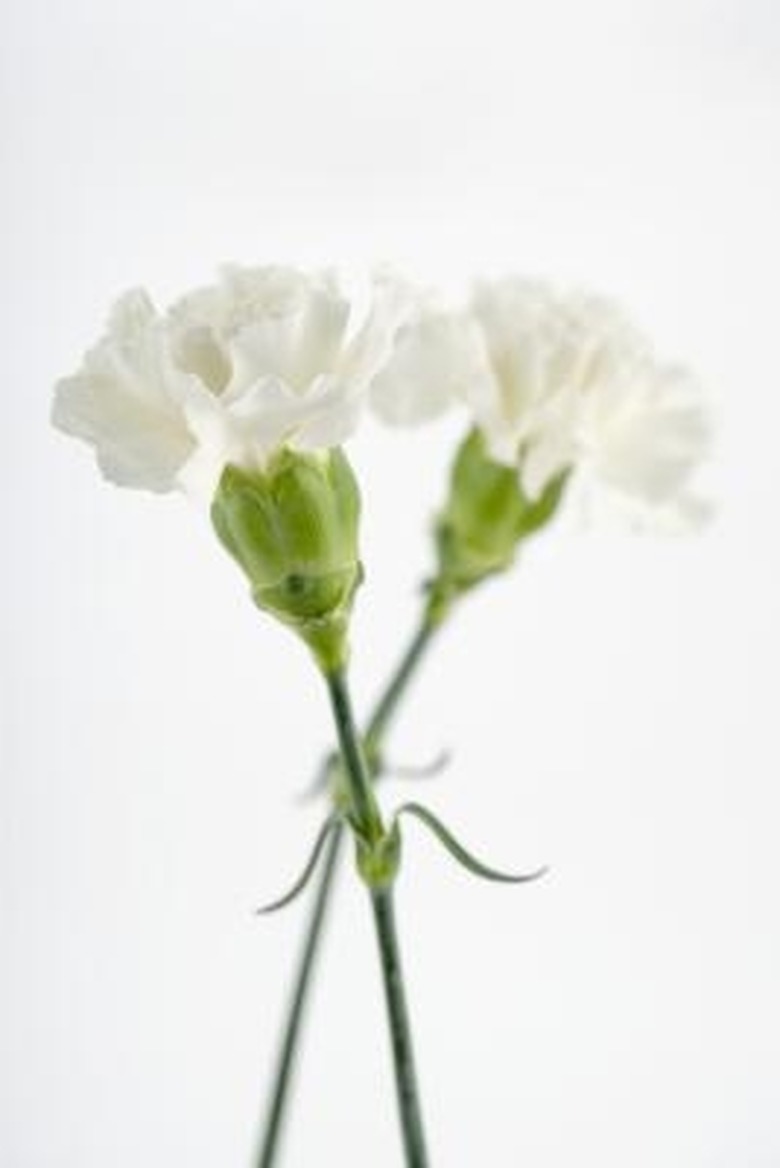What Happens When You Put Food Coloring In A Plant's Water?
What happens when you put food coloring in a plant's water depends on what kind of plant you are talking about. If you put food coloring in water holding red roses, for example, the only result will be red-tinted water. The food coloring, which is non-toxic because it is meant for human consumption, will not harm or benefit the flowers, nor will it have any effect on a strong color such as red. But if you do the same thing with white flowers, you have a different answer and a great science lesson.
Transpiration in Plants
Plants need water to survive. They take up water through their roots and leaves or, if you are working with cut flowers, through their stems. The water travels up through the plant to the leaves and flowers, where much of it turns to water vapor and evaporates into the atmosphere through a process called transpiration. In normal circumstances, you cannot see this process with the unaided eye. Transpiration is part of the water cycle. The water vapor returns to the atmosphere where it forms clouds and rain that falls back to earth.
Food Coloring for Flowers
Putting food coloring in water holding cut flowers does not cause transpiration — it simply allows you to see the part of the process where the water travels up through the plant. As the plant draws up the water, the food coloring dissolved in the water goes along.
How to Observe Transpiration
Put two or three cut white flowers (carnations and baby's breath work best) into a vase of water. Add 10 to 20 drops of blue, red or green food coloring (yellow could be hard to see). Leave the flowers in the water for 24 hours. You will probably not see the food coloring as the water rises through the stems and leaves since they are dark green and the food coloring will be obscured. When the water gets to the white flowers, however, you will see color suffuse the flower, creating a pink, light blue or light green bloom. As the water continues to move through the flower, the food coloring may become concentrated at the edges, creating a fringe-like effect.
Florists Use Food Coloring
Florists use food coloring in just this way to create unusual variations in cut flowers, such as multicolored blooms, petals with colored edges or tips and other effects. You can create your own unique bouquets by experimenting with the technique. For example, you could place white flowers in water with red food coloring and then move them to water with blue food coloring to create a patriotic display for July 4 or Memorial Day. When the flowers are the color you want them to be, display them in a vase of clear water. You can also mix food coloring. Mix red and blue to create lilac flowers or red and yellow to make orange.
